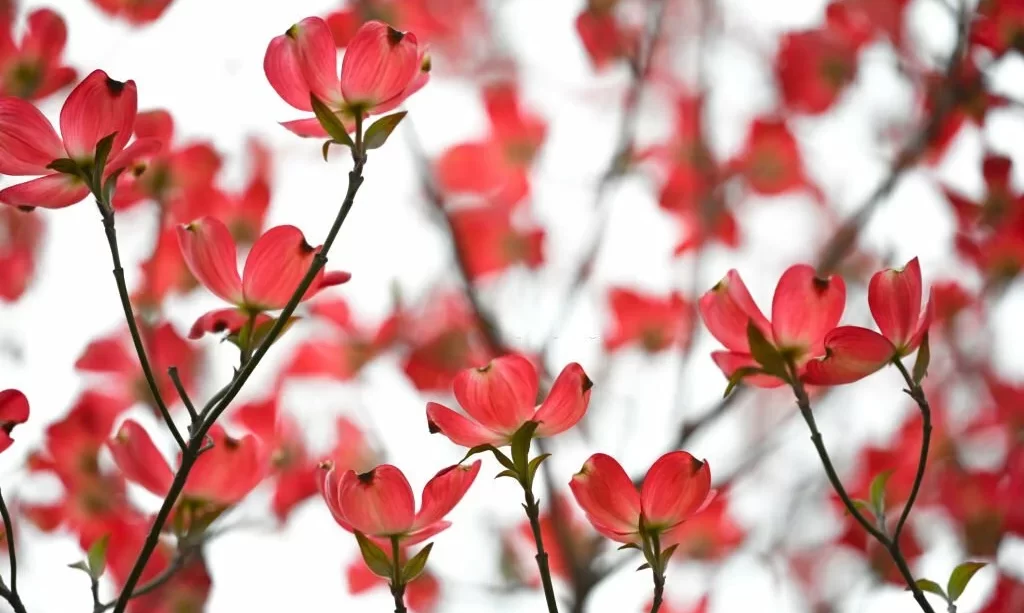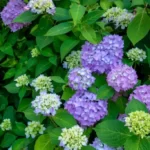The enchanting beauty of dogwood trees, with their elegant blossoms and distinctive foliage, has long captured the hearts of nature enthusiasts and garden lovers. Among the many questions that arise about these ornamental trees, one in particular piques curiosity: do dogwood trees have a scent? The allure of these trees, both in their appearance and, potentially, in their fragrance, adds a layer of intrigue to their already well-established charm. In this exploration, we embark on a sensory journey through the world of dogwood trees, investigating the types of dogwood trees, the visual appeal of their blossoms, and the lingering question of their fragrance.
Types of Dogwood Trees
Dogwood trees belong to the genus Cornus and encompass various species, each with its own unique characteristics and geographical distribution. Among the most prominent dogwood species are the flowering dogwood (Cornus florida) and the Kousa dogwood (Cornus kousa). These species, with their diverse appearances and regional prevalence, contribute to the rich tapestry of dogwood diversity. It’s worth noting that differences in species can also bring variations in the perception of fragrance. As we delve into the world of dogwood blossoms, we consider the intriguing scent that may accompany these elegant trees.
Dogwood Blossoms: Appearance and Scent
Dogwood blossoms, renowned for their distinctive and delicate appearance, are a hallmark of springtime landscapes. These blossoms typically feature four large, petal-like bracts that surround a cluster of smaller, true flowers. Their elegant structure, resembling an artistic composition, makes dogwood blossoms highly sought-after for ornamental purposes. While the visual allure of these blossoms is widely acknowledged, there is also an age-old belief that dogwood blossoms bear a mild, pleasant scent.
The scent of dogwood blossoms is a subject of intrigue, and it has been described as subtle and delicate. However, the experience of the fragrance can be highly subjective, with some individuals detecting it more readily than others. In the following sections, we will explore the reality of dogwood fragrance, considering the factors that influence its presence and perception. Whether dogwood trees indeed emit a scent is a question that adds a layer of mystique to these iconic trees, and we aim to uncover the truth behind this fragrant enigma.
The Reality of Dogwood Fragrance
The question of whether dogwood trees emit a scent is a topic that has intrigued nature enthusiasts and gardeners for generations. The reality of dogwood fragrance is a matter of both botanical curiosity and sensory exploration. While it’s widely believed that dogwood blossoms possess a mild, pleasant scent, the actual presence of this fragrance can be subtle and elusive. Some individuals may readily detect the scent, while others might find it challenging to discern.
In scientific terms, dogwood blossoms do indeed produce volatile compounds that contribute to their fragrance. However, the intensity and the range of perception of this scent can be influenced by numerous factors. The scent, if present, is often delicate and not as robust as that of more strongly fragrant flowers. It may be described as sweet, musky, or mildly spicy, with subtle variations between different species and individual trees. The presence of this scent, or lack thereof, has sparked discussions and debates among those who seek to experience the aromatic charm of dogwood blossoms.
Factors Influencing Dogwood Fragrance
Understanding the intricacies of dogwood fragrance requires consideration of various factors that can influence its presence and perception. These factors encompass environmental conditions, tree health, and individual sensitivity.
- Environmental Conditions: The intensity of the scent emitted by dogwood blossoms can be affected by the environment in which the trees grow. Factors like temperature and humidity play a role in the release and perception of fragrance. Warm and humid conditions tend to enhance the scent, making it more noticeable to those in the vicinity.
- Tree Health: The vitality and health of a dogwood tree can also impact its ability to produce fragrance. Healthy trees are more likely to release scents than stressed or diseased ones. A robust and well-maintained dogwood tree is more likely to captivate with its fragrance.
- Individual Sensitivity: The perception of scent is highly individual, with some people having a more acute sense of smell than others. What may be subtle to one person could be more pronounced to another. Therefore, the elusive nature of dogwood fragrance may be due, in part, to differences in individual sensitivity.
In summary, the reality of dogwood fragrance lies in a delicate balance of botanical compounds, environmental conditions, and individual perception. While the scent of dogwood blossoms is not overpowering like that of some other flowers, its subtlety adds to the mystique and charm of these elegant trees. Whether you perceive it as sweet and enchanting or find it to be elusive, the presence of fragrance in dogwood blossoms is a testament to the fascinating world of plants and the sensory delights they offer.
Historic and Cultural Significance
Beyond their botanical charm, dogwood trees have played significant roles in cultural lore and history. In various regions and traditions, these trees have held special symbolism and cultural significance. One of the most well-known legends is the association of dogwood with Christianity. According to Christian folklore, the dogwood tree was once much larger and was even used to create the cross on which Jesus was crucified. As a result of this role, the story goes, the dogwood tree’s blossoms took on a cross-like shape, with four distinct petals arranged in a cross pattern. This symbolism has cemented the dogwood’s place in Christian art and literature.
Additionally, in some Native American cultures, dogwood bark was used for its medicinal properties and made into teas to treat ailments. The white blossoms, tinged with pink, were believed to represent purity and resilience. In both cultural narratives and practical applications, the dogwood tree has left an indelible mark on human history and continues to be celebrated for its enduring elegance.
Uses
While the primary appeal of dogwood trees lies in their ornamental beauty, they have practical applications as well. Dogwood wood is known for its strength and durability, making it ideal for crafting tool handles, golf club heads, and other implements requiring a sturdy material. Dogwood’s dense, hard wood is often used in fine woodworking and woodcrafting.
Moreover, dogwood trees provide valuable habitats for local wildlife. Their blossoms and fruits attract a range of pollinators, including bees and butterflies. Birds are also drawn to the tree’s berries, making it a popular choice for bird-friendly landscapes. The aesthetic value of dogwood trees extends to the ecological realm, as they support biodiversity and enrich natural landscapes with their presence.
Factors Influencing Dogwood Fragrance
As we delve deeper into the factors influencing the fragrance of dogwood blossoms, it’s important to consider the role of local environmental conditions. While some dogwood trees may emit a mild scent, the intensity of this fragrance can be enhanced or subdued by variables such as temperature, humidity, and overall climatic factors. Warm and humid conditions tend to amplify the release of scent, making it more perceptible to those nearby. In contrast, cooler or dryer weather may make the fragrance less conspicuous.
In addition to environmental conditions, the health and vitality of the dogwood tree are essential elements in determining the presence of fragrance. Healthy, well-maintained trees are more likely to produce and release scents compared to trees facing stress, disease, or other adversities.
Individual sensitivity plays a crucial role as well. The perception of scent varies from person to person, with some individuals having a more acute sense of smell than others. What might be subtle to one observer could be more pronounced to another, contributing to the subtle and elusive nature of dogwood fragrance.
In summary, the factors influencing the fragrance of dogwood blossoms are a complex interplay of environmental conditions, tree health, and individual perception. While the scent of dogwood blossoms may not be as conspicuous as that of other flowers, it adds a layer of intrigue to these iconic trees, enhancing their allure in both the natural world and the realm of human experience.
Historic and Cultural Significance
The enchanting dogwood tree, with its elegant blossoms and timeless beauty, extends beyond the realm of botany to hold profound historic and cultural significance. Across the world, these trees have become woven into the tapestry of human traditions and legends. One of the most enduring stories centers around the dogwood’s association with Christianity. According to Christian folklore, the dogwood tree was once much larger and was used to create the cross on which Jesus was crucified. In reverence for this role, the story goes, the blossoms of the dogwood took on a unique shape, with four petals arranged in a cross pattern. This symbolism has cemented the dogwood’s place in Christian art, literature, and spirituality.
In various Native American cultures, dogwood bark held medicinal properties and was utilized to create healing teas for various ailments. The white blossoms, often tinged with delicate shades of pink, represented purity and resilience. The dogwood’s deep-rooted symbolism reflects its enduring place in human history, and its cultural significance continues to be celebrated across diverse traditions and regions.
Practical Uses and Considerations
While the dogwood tree is celebrated for its ornamental beauty, it also serves practical purposes and ecological considerations. Dogwood wood, known for its strength and durability, finds use in crafting tool handles, golf club heads, and other implements that require sturdy materials. The tree’s dense, hard wood has a place in fine woodworking and woodcrafting, contributing to the creation of functional and enduring items.
Furthermore, dogwood trees provide valuable habitats for local wildlife. Their blossoms and fruits attract a range of pollinators, including bees and butterflies, making them a valuable addition to pollinator-friendly landscapes. Birds are also drawn to the tree’s berries, which offer sustenance and shelter, contributing to the tree’s value in bird-friendly gardens.
In terms of practical considerations, preserving the health and vitality of dogwood trees is vital for both their aesthetic and ecological roles. Proper care and maintenance, including regular pruning and monitoring for diseases, are essential for ensuring the longevity and well-being of these iconic trees.
Conclusion
The question of whether dogwood trees emit a scent reveals a dimension of intrigue that adds to the allure of these elegant trees. While the scent of dogwood blossoms may be subtle and elusive, it represents a sensory facet of these iconic trees that enriches the human experience. Understanding the historical, cultural, and practical aspects of dogwood trees provides a comprehensive perspective on their significance.
Dogwood trees, with their unique symbolism and cultural connections, have left an indelible mark on history and continue to captivate with their timeless beauty. The practical applications and ecological contributions of these trees underscore their value beyond their ornamental charm. Whether through legends, fine craftsmanship, or their role in supporting local ecosystems, dogwood trees continue to be cherished and celebrated.
In conclusion, the fragrance or lack thereof in dogwood blossoms does not diminish their enduring allure and ecological significance. These trees stand as testament to the harmonious blend of nature and culture, adding depth and beauty to the landscapes they grace and the traditions they enrich.




